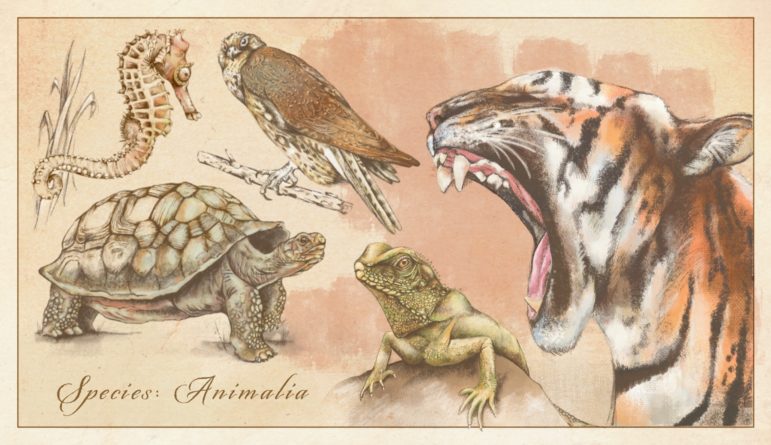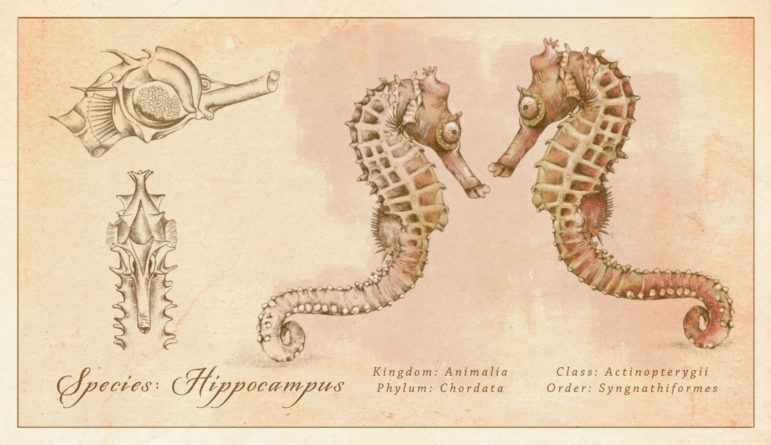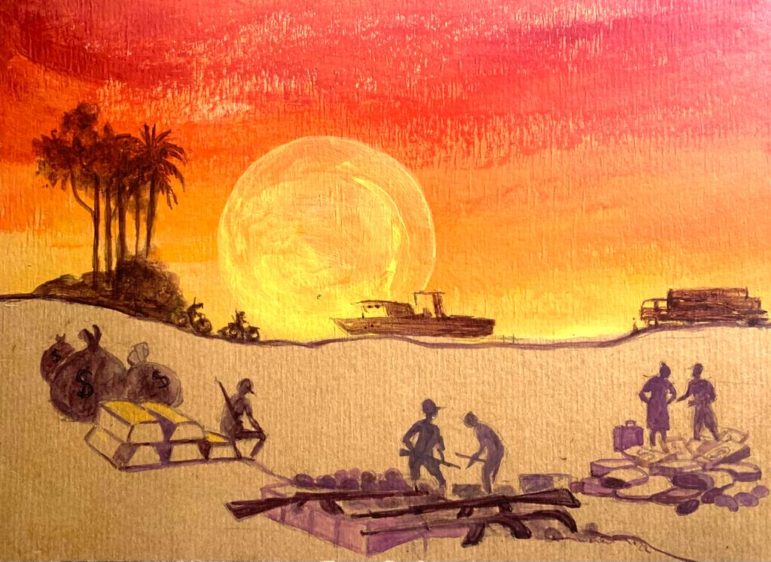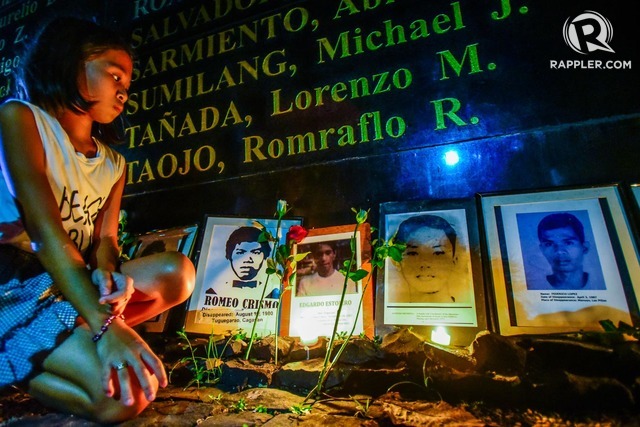

Illegal Wildlife Trafficking: Chapter 2
Guide Resource
Illegal Wildlife Trafficking: A GIJN Guide

Chapter Guide Video Investigative Techniques Methodology Organized Crime
Guide to Investigating Wildlife Trafficking: Short version
The illegal trafficking of wild animals and plants is damaging biodiversity worldwide and spreading diseases. It’s an international story, with great opportunities for investigations in virtually every country. GIJN’s new guide encourages deep reporting about the subject with tips and tools for covering a global trade.
Chapter Guide Resource
Illegal Wildlife Trafficking: Introduction
Chapter Guide Resource
Illegal Wildlife Trafficking: Chapter 1
Chapter Guide Resource
Illegal Wildlife Trafficking: Chapter 2
Chapter Guide Resource
Illegal Wildlife Trafficking: Chapter 3
Chapter Guide Resource
Illegal Wildlife Trafficking: Chapter 4
Chapter Guide Resource
Illegal Wildlife Trafficking: Chapter 5
Chapter Guide Resource
Illegal Wildlife Trafficking: Chapter 6
Chapter Guide Resource
Illegal Wildlife Trafficking: Chapter 7
Chapter Guide Resource
Illegal Wildlife Trafficking: Chapter 8
Chapter Guide Resource
Illegal Wildlife Trafficking: Chapter 9
Social media is now extensively used to facilitate illegal wildlife trafficking (IWT) and journalists can generate many kinds of stories by probing these online platforms. The prevalent role that social media plays in trafficking is well-documented by academics, NGO researchers, and journalists.
Perhaps the best line of inquiry for reporters is to conduct narrow searches around specific species, geographic areas, or suspects. Journalists going online can discover sources for stories and identify particular sellers and buyers.
People involved in trafficking quite openly share evidence of crimes on their social media sites. Their activity may provide clues to the network, such as when they add suppliers or contacts as friends on Facebook.
Finding advertising for endangered species on the internet isn’t that hard, but the cyber-market is complex and secretive, necessitating careful research. Developing the right search terms requires specialized knowledge and may be complicated because of the use of code words. For example, ivory is sometimes obliquely referred to as “white plastic” or “jelly.”
The terminology changes, so it is prudent to find advisers from NGOs, experts on particular species, or law enforcement agencies, who are familiar with the chosen topic. GIJN spoke with expert investigators to glean some general tips.
Another angle of potential value is to report on whether social media companies are living up to their commitments to curb IWT online. We’ll cover more on that later in our guide.
What Stories Can You Report?
What can you expect to find about IWT on social media?
That IWT is conducted online is by now well established — that story has been done. For a good overview check out: The Black-Market Trade in Wildlife has Moved Online, and the Deluge is ‘Dizzying’ by Rene Ebersole in National Geographic.
As noted by TRAFFIC, online platforms “allow global demand opportunities to be opened up, turning what might have previously been a small interest group into a large global community of potential buyers.”
Trying to document the full extent of IWT activity online is complicated, time-consuming, and expensive. For example, four researchers from TRAFFIC and the World Wildlife Fund took eight weeks to gather information and a year to interrogate it. They found more than 100 suspicious posts relating to at least 93 birds and 94 reptiles in Belgium and the Netherlands between July and September 2019, according to their report.
There are plenty of other research-intensive reports:
Researchers discovered more than 541 monitor lizards across 13 species listed for sale during a 30-month monitoring of 20 groups on Facebook in the Philippines, detailed in a TRAFFIC report.
Thousands of Reptile Species Threatened by Under-Regulated Global Trade, a September 2020 article from Nature.
Online Wildlife Markets are Wiping Out Animals, a report by the Alliance to Counter Crime Online. In it, Dan Stiles, an expert in ape trafficking at ACCO estimates that more than half the global trade in apes occurs on social media, where the primate’s babies can be sold from $20,000 to $40,000.
The online black market for cheetahs is especially robust, according to a 2020 ACCO report. Also see this analysis by the Cheetah Conservation Fund. Another relevant ACCO report: The Illegal Wildlife Digital Market: An Analysis of Chinese Wildlife Marketing and Sale on Facebook.
A 2020 study published by TRAFFIC described the Internet-Based Southeast Asia Amphibian Pet Trade.
A Black Market in Wildlife Trafficking Thrives on Facebook and Instagram, according to a Los Angeles Times article by Kurt Wagner.
A 2018 International Fund for Animal Welfare (IFAW) report, Disrupt: Wildlife Cybercrime, identified more than 5,000 advertisements spread across more than 100 online marketplaces and social media platforms.
Collaboration with NGOs doing such surveys has proven useful for some reporters.
Aldem Bourscheit for The Intercept Brasil wrote an article in 2018, 300 Whatsapp Groups Are Linked To Animal Trafficking Across The Country, based on work by the National Network to Combat the Trafficking of Wild Animals, Renctas.
Law enforcement officials patrol the internet, too, and may be of assistance.
Meet the Undercover Crime Unit Battling Miami’s Black Market of Birds, a 2018 article by Rene Ebersole begins this way: “On May 28, 2014, an undercover cop trawling the internet read an advertisement about a bird for sale by someone calling himself “El Doctor.”
Narrow Your Search
The best bet for generating stories from social media is to pick a narrow focus, perhaps one plant or animal and one country, or one platform.
An unusual story developed by Bellingcat’s Foeke Postma was How Instagram Celebrities Promote Dubai’s Underground Animal Trade.
Where did the idea for the story come from? Postma told GIJN:
“My research started with Dutch football star Memphis Depay. He posed with a lion cub in Dubai, Dutch journalists picked up on that and he got flack for it. But nobody seemed to wonder where this cub came from, so I started looking and ended up with this network. I figured if they are bringing them over to a celebrity for their Instagram posts, there might be other celebrities too. The giveaway was that the celebrities are often tagging or mentioning the accounts of the individuals who brought them over — or you could see them in the background of videos.”
Among the interesting techniques used by Postma was to identify a tiger as it changed hands by its signature spots and stripes. He relied on geolocation to track dealers.
Some stories develop around a single species. For example, From Skies to Screens: How Migratory Cranes are Threatened by the Internet, by Rafiullah Mandokhail in Parliament Times (2018), describes the internet’s role in the trafficking of cranes in Pakistan.
Developing Search Strategies
The obvious desire by traffickers to avoid detection makes online searching a cat and mouse game. Deceptive terms and identities are used.
Here are some tips on searching:
- Select keywords about the target species. Get expert help for this. The list might include Latin names, Latin synonyms, common vernacular names, and code words. Using scientific terms may be necessary for accuracy. One study by TRAFFIC lists 118 keywords. Members of The Coalition to End Wildlife Trafficking Online created a list of 1,170 relevant search words and hashtags. However, researchers may be reluctant to part with their searching secrets. A guide – Wildlife Crime Linked to the Internet: Practical Guidelines for Law Enforcement Practitioners – was developed by the INTERPOL Environmental Security Programme (ENS), but is not public.
- Include terms about types of transactional behavior. Searches should include words such as: buy, order, purchase, shop, etc. in the relevant language. A 2020 academic study of online trafficking of birds of prey in Thailand used phrases in Thai such as “buy-sell eagles” and “buy-sell owls.” Seller locations were documented to identify “hot spots.” The researchers found evidence of illegal sales of wild birds and eggs, with local hobbyists and small falconry groups found to be the primary drivers of sales.
- Decide where to search. Select platforms: Facebook, Etsy, eBay, Alibaba, etc. The platforms used will vary with country and region. IWT also happens in secret or closed groups created for the purpose. Here again, there are many options and experienced experts who can help. The researchers who examined sales of amphibians in Southeast Asia, for instance, looked at 20 websites for dealers or groups in the United States and Europe.
- Look for clues to illegality. Most likely, online sellers will claim to have legal credentials for the sale. Complicating the picture, for some species, trade in commercially-bred animals is legal, but selling poached wild-caught animals is not. Researching the specifics is important, and may provide clues that a particular offering is suspicious, such as that breeding it in captivity is nearly impossible.
Specific studies usually describe their methodologies.
For example, web-crawling and “parsing” techniques were used to extract key information for a 2020 report by the Royal Botanic Gardens at Kew in the UK on the illegal trade in endangered plants. (The methodology section starts on page 38 and explains why they preferred using the search engine Bing.)
For practical help on searching methodologies, read the chapter Monitoring and Reporting Inside Closed Groups and Messaging Apps, in the Data Journalism Handbook.
Investigative Considerations
Importantly, there’s the question of whether to go undercover virtually. Realistically, to get very far, social media deception is often necessary. Dealers are cautious on public platforms, but open up on encrypted platforms or closed groups once more trusting relationships are established. Those interviewed for this report stressed the need for protecting your own identity when engaging on social media.
Analyzing, Organizing, and Archiving
Documenting your research is particularly important, in part because online offerings may disappear, sometimes removed by the platforms.
For some useful insights on documentation, and on what you might find, see the section on “intelligence development” in this report by the Wildlife Justice Commission (WJC) on the trafficking of tortoises. “Investigators also engaged traffickers operating at all levels in covert conversations on WeChat, Messenger, and WhatsApp to consolidate evidence of their criminal behavior,” the report says. It continues:
“The images collected during the course of contact with traffickers enabled the WJC team to:
-
- Monitor what was on offer;
- Observe fluctuations in availability and price;
- Compare what each network was offering to pinpoint a single source of supply;
- Verify the claims of the traffickers.”
Creating a comprehensive database of what was being marketed by the trafficking networks enabled the WJC analysts to quantify the scale and value of the trade in financial terms, a methodology that is seldom applied in wildlife crime investigations. WJC also relied on seizure data to identify trafficking routes.
WJC often develops intelligence to inform NGOs and official investigative efforts and has some media relationships.
With material from social media searches, useful maps can be created to show the web of connections.
A final caveat. Identifying buyers and/or sellers may help track the supply chain, but likely only so far. One expert commented that the visible players are likely to be “the disposable people at the very end of the supply chain.”
Social media research is also a proven source of images. In Yemen, the environmental group, Holm Akhdar, which translates to Green Dream, documented the poaching of rare, native animals by publishing pictures the hunters posted of themselves posing with dead leopards on Facebook.
Deeper Searches
NGOs and academics have attempted to develop sophisticated tools to scout the internet for suspicious behavior, but the complexity of the task has proved challenging.
The Cascade is an internet-scraping tool developed by the Global Initiative Against Transnational Organized Crime (GI-TOC) to detect online IWT. The Cascade can be adapted to access different social media platforms and has multiple language capabilities. The results for two major species, African grey parrots and pangolin, are continuously uploaded, but the data is not on the website; contact the team directly for more information (mmfu@globalinitiative.net).
For a good overview of the efforts to systematize searching, see Tackling Wildlife Cybercrime in the EU, a 2020 report by TRAFFIC that concludes: “At present, there is no one-fit-for-all, scalable, reliable, systematic, and repeatable way to detect wildlife cybercrime automatically.” For background, see a 2019 GI-TOC report, Detecting Online Environmental Crime Markets.
Complicating searches even more, traffickers may use obscure online channels. For more on that, there’s a 2021 report by the United Nations Office on Drugs and Crime (UNODC), Darknet Cybercrime Threats to Southeast Asia. Also see a 2018 GI-TOC report, Illicit Wildlife Markets and the Dark Web. It’s worth noting that the relocation of IWT traffic to the dark web is not always seen as bad news by the law enforcement community. The deeper the traffic goes into the dark web, the harder it is for potential buyers to find them.
Pressure on Social Media Companies
Pressed hard by IWT activists, the major social media companies have pledged to crack down on IWT. While they tout their promising starts, there’s limited, actual reporting on what the companies are doing.
The Coalition to End Wildlife Trafficking Online, launched in 2018 by WWF, TRAFFIC, and the International Fund for Animal Welfare, brings together 36 of the world’s biggest e-commerce, technology, and social media companies in an effort to reduce wildlife trafficking online on company platforms. Corporate members include Facebook, Weibo, Leboncoin, and Alibaba.
In a 2020 progress report, the coalition reported that companies are “removing or blocking 3,335,381 endangered species listings from their platforms.”
However, the report doesn’t explicitly say if a target of getting members to reduce IWT online by 80% by 2020 was met, citing the addition of new members and the complications of setting benchmarks and measuring success.
There is some evidence in a 2019 report by TRAFFIC that the level of online wildlife trafficking is declining in China.
The Coalition’s effort has multiple facets, including an online learning training program called OWLET available to all company partners (but not the public) and a Wildlife Cyber Spotter Program that enlists the help of volunteers.
According to the coalition’s progress report: “With significant progress made to enhance internal company policies and protocols for preventing and removing illegal wildlife products, efforts will shift to target the billions of company users across critical demand and source countries to stand up against wildlife trafficking.”
Coalition partners reportedly have adopted policies to fight online wildlife trafficking and are keeping data, but details are not public. The generality of the goal and the lack of transparency about progress make these commitments a logical target for continuing investigation by journalists.
NGOs cooperating with the tech companies are “between a rock and hard place,” one NGO staffer said, hoping for data and cooperation, but also needing to press for more action. Reporters are less constrained in examining policies and practices. For example, some activists argue that plants get less protection than animals.
And despite the signs of success, there remains continuing evidence of IWT on social media.
ACCO conducted undercover investigations and used machine-learning tools to document cyber-markets, raising questions about whether Facebook was doing enough. See the 2020 report, Two Clicks Away: Wildlife Traffic on Facebook.
In addition, a study in 2020 conducted on eBay in the UK found that elephant ivory is still being sold in spite of the online site’s policy of banning ivory sales.
Legal Issues
“Taken as a whole, the overall ability of enforcement authorities to adequately identify, investigate, and prosecute the advertising of illicit wildlife on the internet is severely compromised,” concluded the authors of Catch Me If You Can: Legal Challenges to Illicit Wildlife Trafficking over the Internet.
This policy brief, prepared by Legal Atlas, is the last in a three-part series entitled Digital Dangers published by GI-TOC. The brief draws on three main sources for its analysis: 1) Legal Atlas’ database of wildlife-trade-related legislation 2) current developments, trends, and challenges discussed by members of the CITES Working Group on Wildlife Cybercrime (CITES is the Convention on International Trade in Endangered Species of Wild Fauna and Flora, an international agreement among governments) and 3) an analysis of a broad range of articles for jurisdictional challenges of cybercrime generally, as well as the specifics associated with online IWT.


















